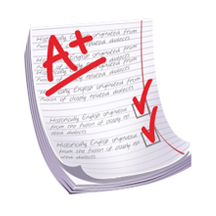Italian as a Second Language L2
A second language or L2 differs from the native language (L1 or LM) and a Foreign Language (LS) in terms of acquisition- learning.
The following is a brief definition of the various language classifications:
• LM or L1 is the language that an individual learns first, from childhood;
• LS, a language generally studied at school, in a country where it is not usually spoken. For example, English is an LS that most Italian students study at school. LS is taught gradually, from beginner to advanced. The teacher usually knows precisely what the students have learnt. Input comes from lectures, dialogues recorded etc.;
• L2/the second language, the language learnt in the country in which it is spoken usually, for example, Italian in Italy. In the case of L2 learning is a mixture, partly controlled, partly spontaneous. The learner is "plunged" into the language and the input available is plentiful.
Italian as L2 for our immigrants, at any age, is the language by which to communicate, make friends, study, work and live in Italy. It is acquired by being in contact with native speakers, us Italians, in every meeting place, from school to the workplace, in offices, in shops, in parks, on the streets etc. It is learnt at school and in Italian courses, but also watching TV, listening to songs, going shopping, playing games.
For all those citizens who came from a Roman LM, that is of Latin background, such as Spanish, Portuguese, Romanian, Moldavian etc., learning Italian as L2 is easier, whilst it is more difficult for those who come from very different language from ours, such as Chinese, Arab, Singhalese etc.
Italian is an inflected language, changing at the end of each word. The letter “a” or “e”, at the end of "casa/e", for example, tells us if it is singular or plural, just like the last part of a verb to understand just who is carrying out an action( andiamo = lets go; partirò = I leave in the future).
The Italian alphabet has 21 letters, 5 vowels and 16 consonants. Generally it is read as it is written.
Teaching Italian as L2 requires knowledge, ability and specialised competence, which is acquired thanks to a specific training and professional practice in the field. In many universities there is a possibility of getting a master’s degree in Teaching Italian as a Second Language.
For more details please see:
What are the Common European Framework levels?
What is the certification?
The following is a brief definition of the various language classifications:
• LM or L1 is the language that an individual learns first, from childhood;
• LS, a language generally studied at school, in a country where it is not usually spoken. For example, English is an LS that most Italian students study at school. LS is taught gradually, from beginner to advanced. The teacher usually knows precisely what the students have learnt. Input comes from lectures, dialogues recorded etc.;
• L2/the second language, the language learnt in the country in which it is spoken usually, for example, Italian in Italy. In the case of L2 learning is a mixture, partly controlled, partly spontaneous. The learner is "plunged" into the language and the input available is plentiful.
Italian as L2 for our immigrants, at any age, is the language by which to communicate, make friends, study, work and live in Italy. It is acquired by being in contact with native speakers, us Italians, in every meeting place, from school to the workplace, in offices, in shops, in parks, on the streets etc. It is learnt at school and in Italian courses, but also watching TV, listening to songs, going shopping, playing games.
For all those citizens who came from a Roman LM, that is of Latin background, such as Spanish, Portuguese, Romanian, Moldavian etc., learning Italian as L2 is easier, whilst it is more difficult for those who come from very different language from ours, such as Chinese, Arab, Singhalese etc.
Italian is an inflected language, changing at the end of each word. The letter “a” or “e”, at the end of "casa/e", for example, tells us if it is singular or plural, just like the last part of a verb to understand just who is carrying out an action( andiamo = lets go; partirò = I leave in the future).
The Italian alphabet has 21 letters, 5 vowels and 16 consonants. Generally it is read as it is written.
Teaching Italian as L2 requires knowledge, ability and specialised competence, which is acquired thanks to a specific training and professional practice in the field. In many universities there is a possibility of getting a master’s degree in Teaching Italian as a Second Language.
For more details please see:
What are the Common European Framework levels?
What is the certification?












